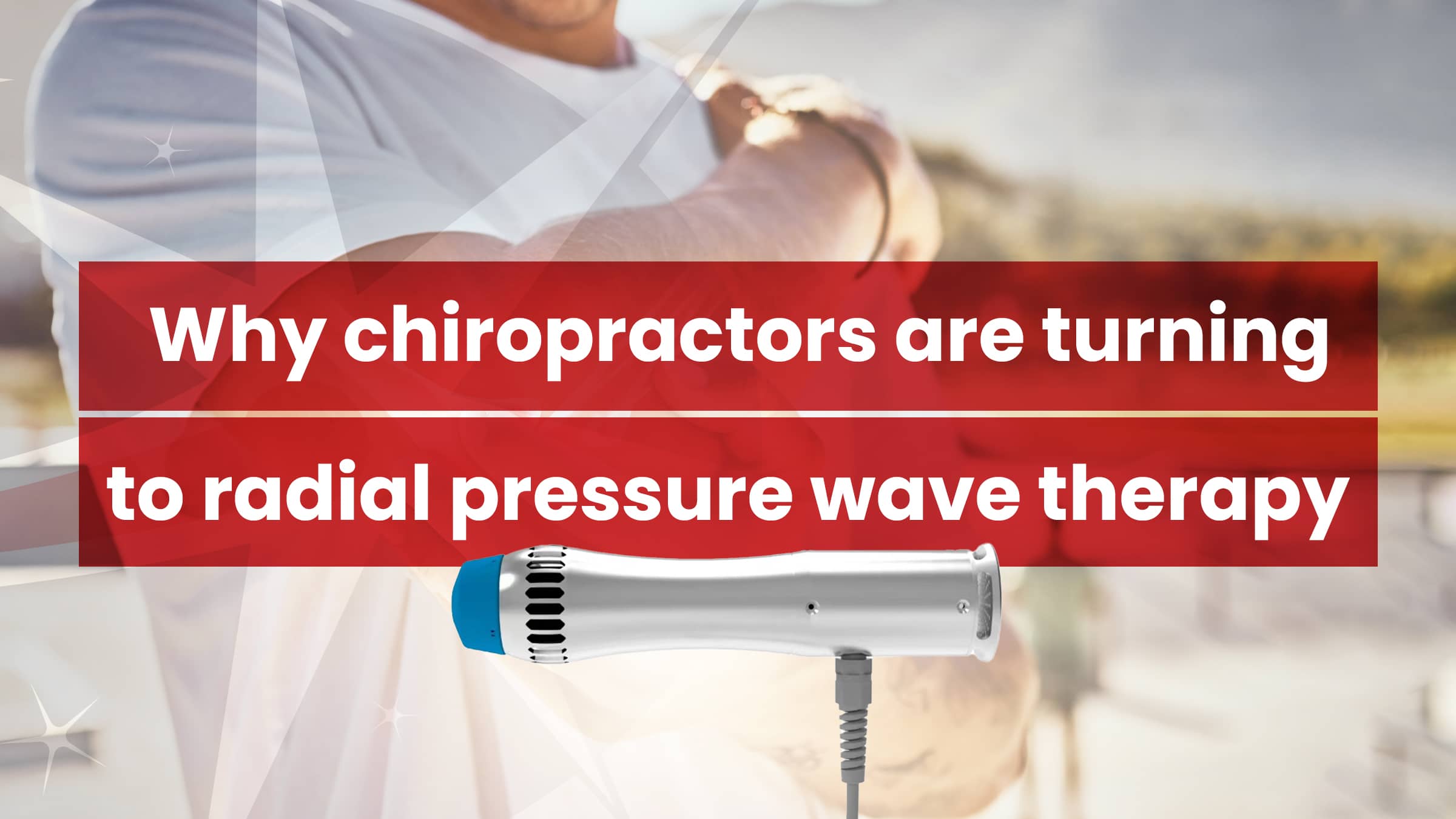Why Radial Pressure Wave Therapy Is Gaining Ground in Chiropractic Care
As demand grows for noninvasive, drug-free musculoskeletal therapies, chiropractors are turning to advanced tools that align with their hands-on approach to care. Among these tools, radial pressure wave (RPW) therapy is emerging as a first-line treatment option for myofascial pain, tendon disorders, and soft tissue tension.
At Medray, we believe RPW therapy—offered through our Softshock 2.0 Radial Pressure Wave device — is not just an “entry-level” modality, but a clinically strategic, neurologically active tool for chiropractors ready to expand their treatment capabilities.
What Is Radial Pressure Wave Therapy?
- Myofascial pain
- Paraspinal hypertonicity
- Upper trapezius or gluteal tension
- Plantar fasciitis and other fasciopathies
- Tendon-bone junctions (Achilles, lateral elbow, etc.)
This gentle but powerful therapy stimulates mechanoreceptors in fascia and soft tissues, reducing pain, improving circulation, and preparing the body for manual work or rehabilitation.
Why RPW Therapy Belongs in Modern Chiropractic Care
- Early-phase or subacute conditions
- Patients who are sensitive to deeper stimulation
- Efficient clinical flow in high-volume practices
RPW therapy acts as a primer, improving tissue pliability and lowering nociceptive input before adjustments, decompression, or exercise therapy.
RPW vs. Manual Therapy: A Powerful Combination
RPW enhances, not replaces, manual therapy. It reduces tissue resistance, improves treatment tolerance, and allows support staff to take a more active role in the care plan—freeing the doctor to focus on diagnostics, adjustments, or consultations.
Patient Engagement and Value Perception
This makes RPW especially valuable for cash-based services, where perceived value directly impacts patient compliance and retention.
When to Consider Focused or Defocused Shockwave
- Chronic tendinopathies at greater depths
- Calcific tendinitis
- Delayed fracture healing
- Cases that plateau after RPW
Case Example: Chronic Low Back Pain
- RPW therapy to glutes and lumbar fascia (1x/week for 3–8 weeks)
- Flexion-distraction or decompression therapy
- Chiropractic adjustments
- Functional exercise therapy for stabilization and mobility
In this model, RPW serves as the neurologically active primer that makes every subsequent intervention more effective.
RPW Therapy: Efficient, Scalable, and Effective
- Delegation to trained staff
- Integration into once-per-week protocols
- A bridge between manual therapy and performance care
- Functional exercise therapy for stabilization and mobility
Conclusion: RPW Isn’t an Alternative—It’s an Advantage
Radial pressure wave therapy is not a budget-friendly substitute for focused energy. It’s a first-line, patient-friendly, and practice-efficient tool that helps chiropractors deliver better care, faster results, and greater patient satisfaction.
At Medray, we’ve built the Softshock 2.0 RPW to meet these exact demands—combining innovation, durability, and evidence-backed protocols to help providers like you deliver exceptional outcomes. Interested in learning how RPW therapy can elevate your practice? Call us at (573) 745-1086 or visit our Contact Us page to request more information or schedule a demo.
Further Reading
Dr. Christopher M. Proulx explores the strategic role of radial pressure wave therapy in chiropractic care in his latest article for Chiropractic Economics. Learn how this accessible, neurologically active modality can enhance outcomes across the healing cycle.
Medray Laser & Technology manufactures and distributes FDA-cleared medical devices designed to support circulation, tissue stimulation, and pain relief. Our products are intended for use by licensed healthcare professionals. While clinical research and practitioner experience support the use of laser and radial pressure wave (RPW) therapy in various applications, some uses described in this article may be considered off-label and are not explicitly cleared by the FDA. Patients should consult their healthcare provider to determine the best treatment for their individual needs. The information provided in this article is for educational purposes only and should not be considered medical advice or a substitute for consultation with a licensed medical professional.
